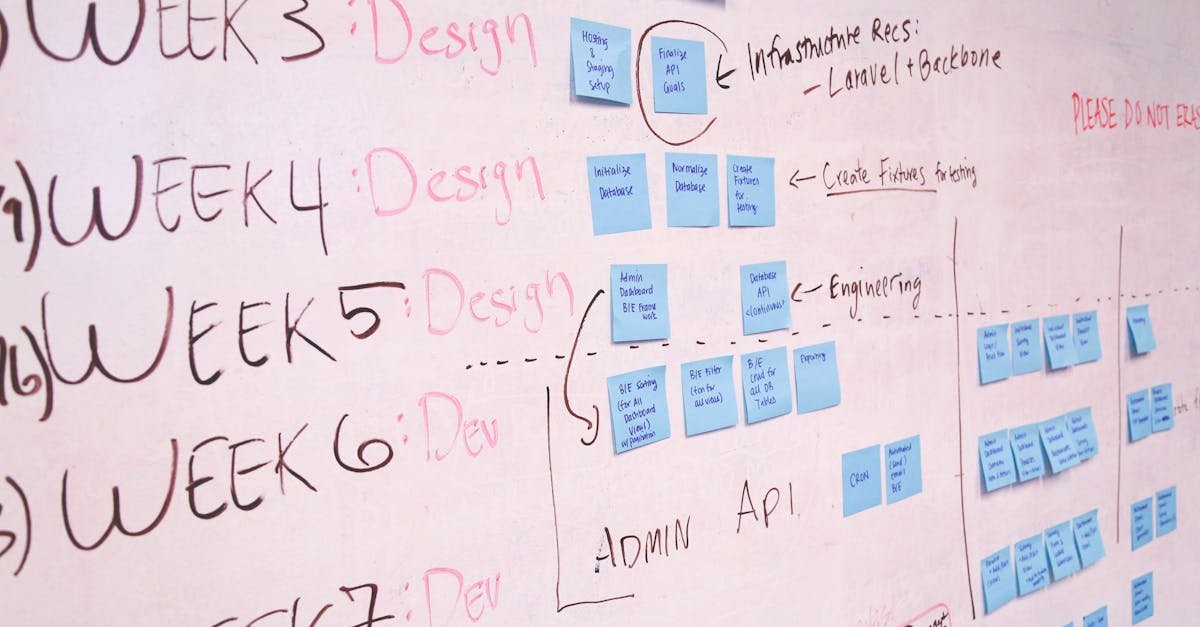Streamlining Success: Tactics to Overcome Process Inefficiencies
Challenges That Slow Us Down Ever felt like you’re running in circles at work? You know the drill: long process chains with too many players, endless emails, and if you squint hard enough, you might see a task that seems to have a life of its own. Your team might be hustling, but the inefficiencies are like those pesky weeds in your garden. They crop up, and before you know it, they’ve choked the life out of your beautiful flowers—you know, those goals you’ve been aiming for. Every organization fights those dragons, but figuring out how to slay them is where the magic happens. Identifying Inefficiencies Before we can streamline success, we need to own up to the mess. Here are some roadblocks to keep an eye on: Endless Email Threads: Seriously, how many emails can one person send about one project? It’s exhausting. Redundant Tasks: You’re doing the same thing two, three, or four times when you should’ve streamlined it right from the get-go. Poor Communication: Lost in translation? Yeah, we’ve all been there. When teams don’t share the same page, chaos ensues. Lack of Automation: Much like a car running on fumes, your processes might need a digital boost. Why not let software take care of the boring stuff? Finding these inefficiencies isn’t just about playing detective; it’s about having those straightforward conversations with your team members and being brave enough to question the status quo. The Power of Streamlined Processes So, let’s pivot. The goal isn’t just to identify issues; it’s to tackle them head-on. When processes are streamlined, every little change can transform chaos into clarity. What does that look like in real life? Standard Operating Procedures (SOPs): Document everything! It helps the new folks get up to speed and gives everyone else a reference point. Visual Workflow: Use flowcharts to map your processes. Seeing it visually helps in spotting bottlenecks. Regular Check-ins: Set up monthly meetings that aren’t just about checking boxes. Make this a space for open discussions about what’s working and hat’s floundering. Collect Feedback: Your team is on the front lines. Their insights are gold for refining processes. Training & Development: Invest in training programs that help your team acquire new skills—technology is evolving every day, and your processes should too. These are not mere tips; they’re a pathway to a more fluid operational model. The Role of Technology Let’s chat about tech. You might be rolling your eyes, thinking, “Not another tech recommendation!” But hear me out. The right tools can supercharge efficiency. Imagine project management software that pulls everything together. With cloud systems, you can collaborate in real-time, avoiding those lengthy email chains. RPA (Robotic Process Automation): Automate those repetitive tasks. This isn’t just a trend; it’s a necessity. AI Chatbots: Want quicker responses to common queries? Deploy chatbots to handle basic inquiries. These tech solutions don’t just optimize processes; they give your team the gift of time. With less time spent on menial tasks, there’s more breathing space for creative ideas and strategic thinking. Building a Culture of Continuous Improvement Creating a streamlined environment is more than just fixing processes; it’s about cultivating an attitude of growth. A team that embraces change willingly becomes adaptable. Encourage Experimentation: It’s okay to try something new. Failure isn’t the enemy—it’s part of learning. Celebrate Wins: Whether big or small, recognizing efforts can keep motivation high. Establish Mentorship: Pairing seasoned staff with newcomers can foster a culture of knowledge-sharing that enhances the entire team’s capability. When everyone feels they can contribute to continuous improvement, the results will speak for themselves. Measuring Success You’ve revamped processes, embraced tech, and fostered a culture of improvement. Now what? Measurement is everything. It’s how you know you’re not just spinning wheels but actually moving forward. KPIs (Key Performance Indicators): Define what success looks like for each process. Regular Reviews: Analyze performance data consistently. Are you meeting your goals, or is something off track? Customer Feedback: The end-user experience isn’t solely about your process efficiency, but it’s a big part of it. Happy customers spell success. Employee Engagement Surveys: Check in with your team. Happy employees often lead to satisfied customers. Tracking progress will keep you grounded and aware of how far you’ve come in the process optimization game. Why Streamlining Leads to Success Think of streamlining as that magical elixir that your organization didn’t know it needed. You’ll find: Improved Morale: When a team is less bogged down by frustration, they’re happier. A happy team is an effective team. Increased ROI (Return on Investment): Reduced overhead and time wasted translates into better profits. Who doesn’t want that? Faster Decision-making: With the right data at your fingertips, you can pivot quicker than your competitors. Customer Satisfaction: Streamlined processes lead to smoother interactions, which in turn promotes loyalty. By focusing on streamlining success, you’re not just fixing what’s broken; you’re reshaping the future of your shared services landscape. Final Thoughts It’s clear that operational efficiency isn’t just a buzzword; it’s a necessity for sustainability and growth. Let’s be real—every organization is in a constant race against time and efficiency. So why add to your burden when streamlining is attainable? We’ve got this. With the right mindset, culture, and tools, overcoming process inefficiencies is not just possible. It’s entirely achievable. So, take a moment today and assess where you can simplify, where you can automate, and where you can delegate. Change is often intimidating, but it can also be exciting. And you’re not alone on this journey—there’s a whole community out there sharing tips and insights. For deeper dives and insights into shared services, innovation, and leadership, explore the amazing resources at THEGBSEDGE. I’m Vikrant Aglawe, and trust me, with a bit of effort, we can streamline success together.
Streamlining Success: Tactics to Overcome Process Inefficiencies Read More »









